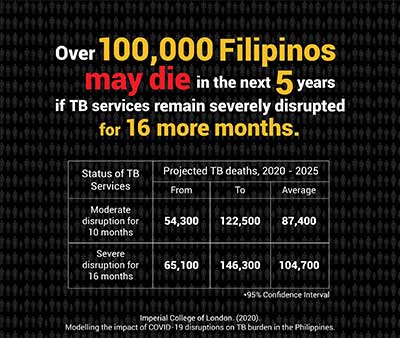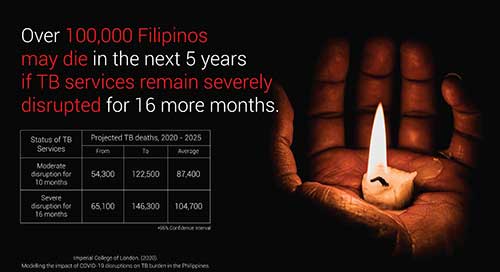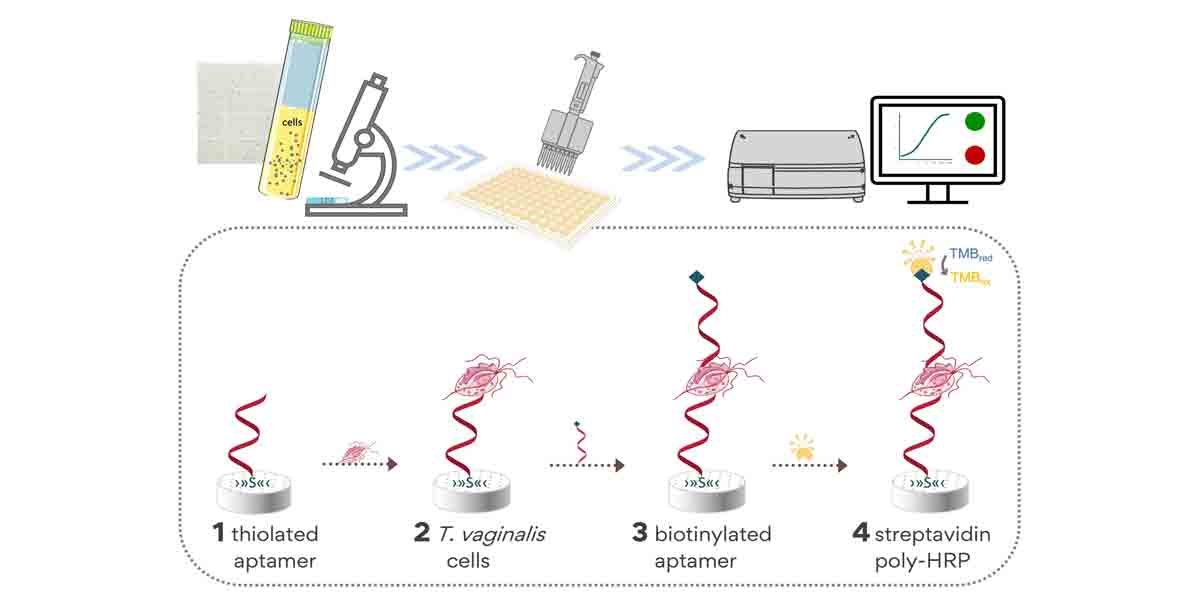
Over 100,000 Filipinos may die of tuberculosis (TB) in the next five years or 20,000 TB deaths per year if TB services continue to be disrupted because of mobility restrictions brought about by COVID-19.
A modelling study by the Imperial College of London projected between 65,100 to 146,300 TB deaths may happen if local TB services remain limited in another year.
Since March 2020, disruption in regular TB services from consultation, testing, to treatment due to limited mobility have resulted in a drastic drop in the number of TB cases notified in the country. By the end of 2020, approximately 268,816 new and relapse TB cases were notified to DOH, a 35% decrease from 2019 data. Case notification is an important activity of the TB Program for finding and treating identified TB patients promptly will help reduce the spread of TB and set the course for its elimination.
According to the World Health Organization (WHO) global TB report in 2020, the Philippines has the highest TB incidence rate in Asia, with 554 cases for every 100,000 Filipinos.
TB disease is caused by Mycobacterium tuberculosis, a bacteria passed on from a person with TB when he or she coughs, sneezes, spits or even talks. Bacteria will be expelled in respiratory droplets and close contact may inhale the bacteria. At first, the body’s natural defense system will fight the bacteria but once the immune system weakens, the bacteria may attack the lungs and other parts of the body.
TB is curable and treatment is free in public health facilities nationwide. The 2016 National TB Prevalence Survey pointed out that only 19% of people with TB symptoms sought treatment and care. The rest would do nothing or self-medicate. These behaviors may likely prevail today as mobility restrictions continue with COVID-19.

Amid the pandemic, DOH and its partners are doubling efforts to get TB care back on track. In observing World TB Day on March 24, DOH makes an urgent plea to local leaders to support the activities to find and treat as many Filipinos with TB as possible.
“Let us end the stigma associated with tuberculosis. TB is a treatable disease, and we can prevent deaths and possible outbreaks if TB is detected and treated early. This is why the Department of Health is continuously strengthening its efforts to deliver TB prevention and treatment services. It is likewise important to support someone with TB and encourage them to get proper treatment. We call on people who are experiencing symptoms of TB or those diagnosed with TB to consult with your local health centers or TB clinics for free treatment,” said Health Secretary Francisco T. Duque III.
With the theme “Find TB: Get Back on Track,” the World TB Day observance in the Philippines will encourage local leaders to respond more urgently and seriously to the burden of TB. The first-ever virtual celebration is supported by the Philippine Coalition Against Tuberculosis (PhilCAT), WHO, United States Agency for International Development (USAID), Global Fund against HIV, TB and Malaria, and the Contact Center Association of the Philippines (CCAP).
DOH, with the support of USAID and FHI360, is rolling out #TBFreePH, a national communication campaign supporting the program’s goal of making the Philippines TB-free by 2035. With the tagline “Live TBFree,” #TBFreePH aims to address stigma and discrimination surrounding TB by highlighting resilience and positive health-seeking behaviors of Filipinos. DOH with WHO is also recognizing Provinces/HUCs that have stepped up amid COVID-19 restrictions through the Race to End TB Awards.
Under #TBFreePH, the DOH is soliciting stronger support to end TB through advocacy drives for lawmakers and Local Chief Executives with an aim to increase TB funding, through private sector engagement, and through communication materials aimed at empowering Filipinos with TB to seek early treatment and complete their treatment so they can live healthier, more comfortable TB-free lives.
Lastly, #TBFreePH encourages the community to talk about TB and be informed about TB to address the stigma associated with it, inspiring more TB patients to get themselves treated so they can also live TB-free.
Indeed, the clock is ticking, and the time for action is now.
























